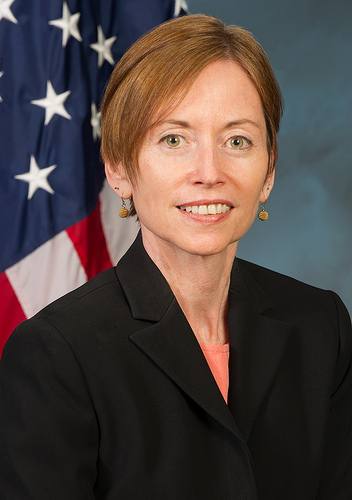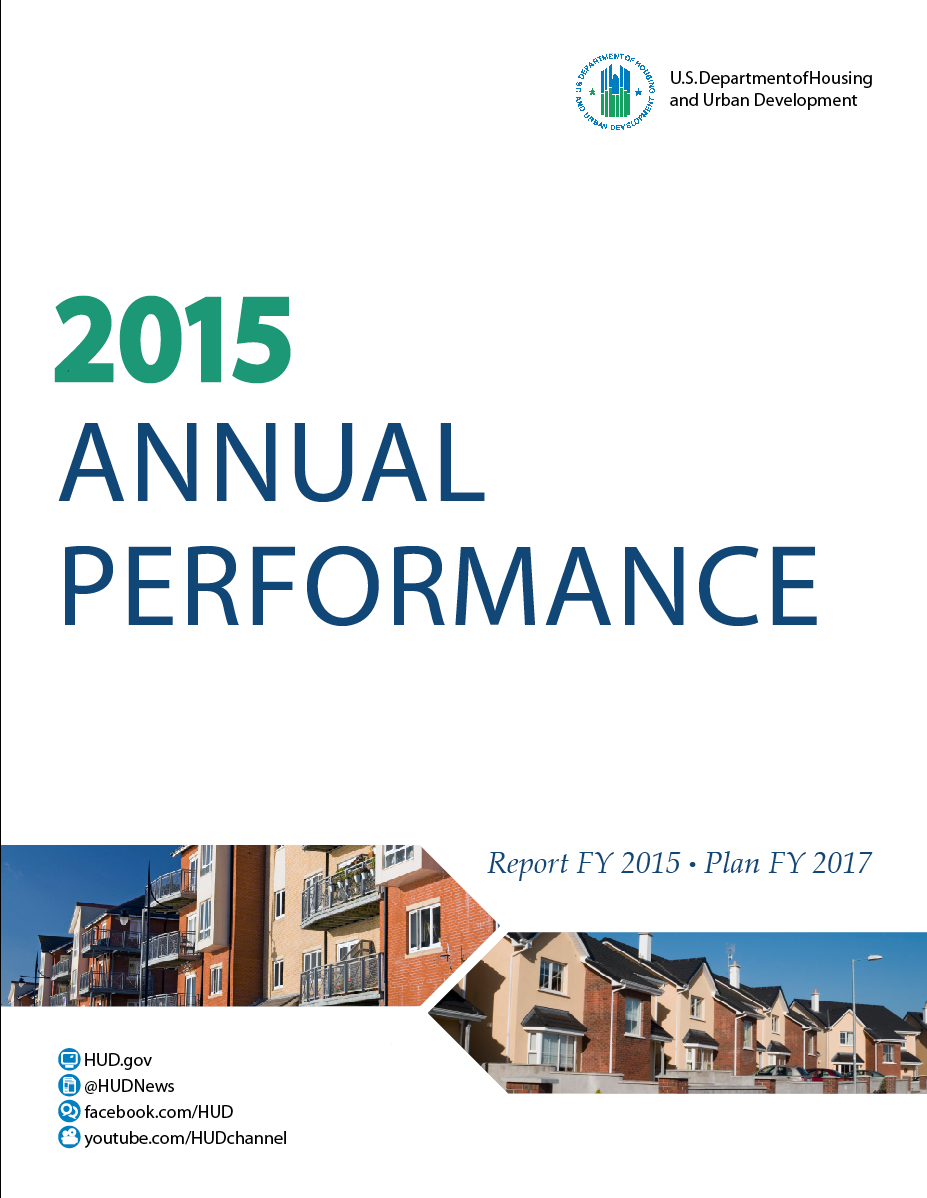- Home
- Agencies
- Department of Agriculture
- Department of Housing and Urban Development
- General Services Administration
- Department of Commerce
- Department of the Interior
- National Aeronautics and Space Administration
- Department of Defense
- Department of Justice
- National Science Foundation
- Department of Education
- Department of Labor
- Office of Personnel Management
- Department of Energy
- Department of State
- Small Business Administration
- Environmental Protection Agency
- Department of Transportation
- Social Security Administration
- Department of Health and Human Services
- Department of the Treasury
- U.S. Agency for International Development
- Department of Homeland Security
- Department of Veterans Affairs
- Goals
- Initiatives
- Programs
Primary tabs
FY 16-17: Agency Priority Goal
Increase educational attainment among HUD-assisted tenants
Priority Goal
Goal Overview
The persistent and growing education gap between children of low-income families and higher-income families demands further attention to the agency’s role in supporting the educational attainment of our residents. Improving access to stable, quality, and equitable education for HUD-assisted children is crucial to increasing employment opportunities and breaking the cycle of intergenerational poverty. Recent research on HUD’s Moving to Opportunity experiment confirmed that place matters for children's educational attainment and access to opportunity, now and in the future.[1] HUD is exploring options to increase the use of housing vouchers in high opportunity areas, through mobility counseling and the Small Area Fair Market Rent (SAFMR) demonstration.
The department is equally committed to investing in communities where low-income and rent-assisted residents are concentrated. The Choice Neighborhood and Promise Zone programs were developed with an understanding that these long-term revitalization efforts require community-driven solutions and cross-sector involvement to holistically increase opportunity and outcomes for residents. HUD is working with the Department of Education on several initiatives from increasing access to early childhood education to improving access to financial assistance and tax credits that make college more affordable. Through the alignment of resources at the local level, we can most effectively improve the quality of life for the children and families HUD serves.
[1] Chetty, Raj, et al. Is the United States still a land of opportunity? Recent trends in intergenerational mobility. No. w19844. National Bureau of Economic Research, 2014.
Strategies
- Encourage PHAs to support higher education access and attainment for residents. Implement strategies to increase Free Application for Federal Student Aid (FAFSA) assistance and completion. Collaborate with federal, local, and non-governmental partners to support local education initiatives for tenants ranging from early childhood education, grade level reading proficiency, higher education, and career training.
- Improve access to and sharing of education data for HUD-assisted households to better understand the impact of our housing and services on educational attainment. Through research projects, place-based initiatives, and state data-sharing agreements, HUD is getting more information on resident-level educational access and achievement outcomes that will enable better targeting of services.
- Increase connections to partnerships with educational philanthropies and nonprofits. HUD is collaborating with several organizations which focus on expanding digital literacy, increasing STEM education for young girls, positive law enforcement interaction and vocational training, youth development programs, reducing chronic absenteeism, and improving grade level reading for third graders – a critical marker of future educational success. These partners include the Annie E. Casey Foundation, Learning for Life, ABCmouse.com, AARP, the National Center for Women and Technology (NCWIT), Grade Level Reading, First Book, Learning for Life, GreatSchools and others.
Progress Update
Through a newly established Agency Priority Goal, the Department is solidifying its work to bridge the opportunity gap, so that a child’s zip code is no longer the strongest predictor of economic success. The Department is engaging in new partnerships and increasing the resources for the development and educational attainment of children of all ages. Our progress and highlighted milestones for each quarter of this two-year goal are presented below. Note: Data toward FY 2016 Actuals will not be available until end of Q2 FY 2017. FY 2016 tenant data will be compared with the 2016-17 academic year FAFSA application cycle. Therefore, this data will consistently be published on a significant delay.
FY16 Q4 UPDATES:
Summer Opportunity Projects
HUD was part of the Summer Opportunity Projects with PHAs, an interagency initiative led by the White House, alongside non-profit and private sector partners, to increase the number and quality of summer jobs, learning, and meals programs across the country. HUD surpassed our goal of connecting more than 1,000 HUD-assisted youth to summer opportunities in the 10 Summer Opportunity Hubs by helping 1,336 youth secure employment (and data is still coming in from other cities).
Students + Opportunities + Achievements = Results (Project SOAR)
On August 2, 2016 made $2 million in grants available to help low-income families and young people apply for federal aid for college and other post-secondary educational opportunities. The funding will support education navigators in up to six Public Housing Agencies (PHAs) across the country. Applications were due on September 28 and awards will be announced in FY 2017.
FY16 Q3 UPDATES:
Lifting Up Best Practices
On April 29, Secretary Julián Castro announced HUD is joining forces with the Campaign for Grade-Level Reading (GLR), a national partnership to ensure that more children in low-income families succeed in school and graduate prepared for college and a career. Through the national partnership, HUD will promote the great work PHAs are doing with their local campaign to focus on summer reading, school preparedness, and chronic absenteeism – driving factors of grade-level reading in the third grade. Grade-level reading by the end of the third grade is an important predictor of school success and high school graduation. The recently signed Memorandum of Understanding (MOU) will bring HUD and the GLR Campaign together to highlight the work being done in at least 25 PHAs participating in local campaigns across the country to improve educational outcomes for children living in HUD-assisted housing.
Place-based Initiatives
On June 6, the Obama administration named the final nine Promise Zones, rounding out the 22-community initiative in high poverty urban, rural and tribal areas. The federal government will work strategically with local leaders in Promise Zones to boost economic activity and job growth, improve educational opportunities, reduce crime and leverage private investment to improve the quality of life in these vulnerable areas; HUD is the lead organization for the 14 urban communities. All Promise Zones will receive priority access to federal investments that further their strategic plans, federal staff on the ground to help them implement their goals, and five full-time AmeriCorps VISTA members to strengthen the capacity of the Promise Zone initiatives.
On June 28, HUD awarded $8 million to ten severely distressed neighborhoods to stimulate affordable housing and economic development through Choice Neighborhood Planning Grants. These awards will help local leaders to craft their own plans to revitalize and transform these neighborhoods. Schools districts are key planning partners, as communities develop comprehensive approaches to address the interconnected challenges of distressed housing, inadequate schools, poor health, high crime, and lack of capital.
FY16 Q2 UPDATES:
Data Sharing
On April 19, HUD and the Department of Education’s Federal Student Aid signed an MOU to enable data sharing on FAFSA completion and subsequent enrollment among HUD-assisted residents. Baseline numbers are expected by the end of May. The Department is also looking at options for securing data on the total number of assisted residents enrolled in higher education, with or without federal aid. The Department will adjust our Choice Neighborhoods metrics to better track performance improvement among implementation grantees.
Behavioral Insights Experiment
HUD is collaborating with the White House Social and Behavioral Sciences Team and the Department of Education to experimentally test the impact of various FAFSA outreach methods and financial literacy supports on completion of FAFSA and enrollment in higher education among HUD-assisted tenants. Phase 1 included light touch mailing to approximately 45,000 voucher-assisted households with at least one youth aged 17-20. These mailers went out in March 2016.
FY16 Q1 UPDATES:
Solidifying HUD’s partnership with Federal Student Aid
HUD’s Office of Public Housing Investment has partnered with the Customer Service team of Federal Student Aid to reach out to college-aged residents and their families early and regularly to let families know about college financing options. Using webinars and providing resources, FSA is offering support to PHAs to work with their residents and increase awareness and assistance with timely filing of FAFSA applications. The agencies are working to share data on FAFSA application completion and take-up of aid across all HUD-assisted households, to target communities with the lowest participation in federal aid and, presumably, affordable higher education.
Juvenile Re-entry Assistance Program (JRAP)
On November 2, 2015, HUD and the Department of Justice (DOJ) announced $1.7 million for PHAs to aid eligible public housing residents who are under the age of 24 to expunge or seal their records in accordance with their applicable state laws. Through the Juvenile Re-entry Assistance Program (JRAP), HUD and DOJ are teaming up to help Americans who’ve paid their debt to society rehabilitate and reintegrate back into their communities (excluding makers of meth on public housing property, sex offenders or those convicted of domestic violence). Having a criminal record severely limits a person’s ability to seek higher education, find good employment, qualify for credit and secure affordable housing. These grants will allow Public Housing Authorities and their partners to help these young people reach their full potential.The awards were announced on April 25, 2016 and went out to 18 PHAs.
Maximizing Partnerships with Education Philanthropies
In December 2014, HUD began working with ABCmouse.com to provide our families with greater access to early learning and digital literacy opportunities. ABCmouse is a comprehensive online curriculum focused on children ages 2-7, which aims to ensure low-income children are prepared when they enter primary school and build a strong foundation for future academic success. Since the July 2015 launch of ConnectHome, HUD’S initiative to bring free and reduced high-speed internet to 28 communities, HUD has focused strategically on bringing these resources to newly-wired homes. More than 45 PHAs signed on to providing the resource after a September 24, 2015 webinar about the program, bringing the total PHA count to 227 and all 28 ConnectHome communities.
Next Steps
9/30/2016: Develop and sign an MOU between HUD, Federal Student Aid (FSA), and IRS Volunteer Income Tax Assistance (VITA) sites serving HUD-assisted households to increase awareness and early completion of FAFSA applications. Removed. HUD has MOUs in place with both FSA and IRS, and is partnering with both for strategic alignment and outreach to our assisted families. The agency decided not to develop a new tri-agency MOU at this time.
12/30/2016: Release report on the University of Pennsylvania multi-site study on the effect of HUD assistance on educational outcomes for children and youth, a pilot study that demonstrates the potential of matching housing and education administrative data for research. Update: The researchers on this study were granted an extension on the delivery of findings, due to unforeseen staffing issues. Formerly targeted for completion in July.
3/31/2017: Use behavioral insights to promote completion of FAFSA applications by HUD-assisted students through a low-cost, evidence-based, experimental approach in partnership with the U.S. Social and Behavioral Sciences Team and the Department of Education. Ongoing. The first phase of the experiments, a direct mail campaign, went out to 40,000 residents aged 16-20 in March 2016. HUD is currently identifying communities for the second phase, which will use mail, email, and telecommunications.
Expand All
Performance Indicators
Percentage of HUD-assisted residents aged 17-34 who are currently enrolled in college
Percentage of HUD-assisted residents ages 17-37 who have completed a FAFSA application
Percentage of HUD-assisted residents ages 17-34 who completed a FAFSA application and then received aid to attend school
Contributing Programs & Other Factors
Contributing programs and agencies include: HUD Office of the Secretary, Office of Policy Development and Research, Public and Indian Housing, Choice Neighborhoods, Promise Zones, Department of Education (ED), Department of Health and Human Services (HHS), among other federal partners.
No Data Available











